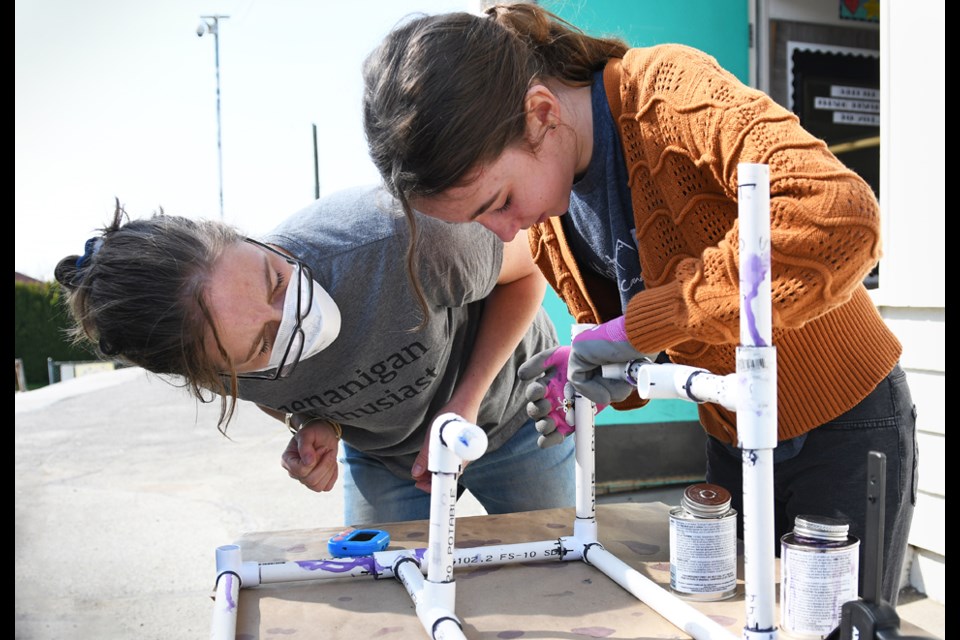Gillian Potyka’s Grade 6 and 7 class very nearly opened a coffee shop and roasted their own coffee beans this year – instead, they’re building a fleet of remotely operated underwater vehicles from scratch so they can film whatever is lurking in Burnaby’s lakes, ponds and streams.
When asked if all that sounds insanely ambitious, the Sperling Elementary School French immersion teacher laughs.
“Potentially,” she says.
But if things don’t go according to plan, that won’t be the end of the world, according to Potyka, because that’s not where the learning happens.
“I want my students to find success, don’t get me wrong,” she says. “Like, I want them to get there; I want them to get an ROV in the water and for them to film the underwater life, like they said they wanted to do, but the level of learning that they’ve done doing the project itself and even just to get to this point has been massive. And that’s what I enjoy about these projects.”
How to build a pvc submersible
Potyka answers questions between helping groups of students glue together lengths of pvc pipe to make up the submersibles’ frames.
The work is finicky and unforgiving, with the glue drying quickly and misalignments potentially messing up the whole thing.
Potyka points to one group’s creation, where a joint is just a few millimetres off but is putting the whole structure out of whack.
Such missteps are all part of the learning, Potyka says.
“It’s all about ‘We’ve made a mistake. How are we going to recover from it? What are we going to do? How are we going to persevere through this and how are we going to keep the project going?’ Which is anything that you do in life,” she says.
Ideally, by the beginning of June, each group will have built an ROV with propellers, a camera, an umbilical cable and a control box.
To help make that happen, Potyka has enlisted expert help from a veteran of submarine engineering: Jean-Marc Laframboise, senior technical advisor with International Submarine Engineering Ltd. in Port Coquitlam.
Besides helping students actually build the submersibles for the last few months, he has teamed up with Potyka on lessons and experiments related to key concepts, like structure, ballast, propulsion and navigation.
“I’m enjoying helping the students,” he says.
When the ROVs are complete, he says the kids will make a trip out to Port Coquitlam to test them out in his company’s test pool.
“Once it’s all working, they can take them to the little lakes around here and put it in the water,” he says.
‘We want to film ocean life’
Potyka has done a lot of big projects with her classes over the years, and all of the ideas have come from students, she says.
“I want to encourage their interests,” she says.
That means she tends to start the school year never quite knowing what they’ll end up working on.
This year’s project was conceived after a presentation by Ocean Networks Canada in the fall.
“My students said something along the lines of ‘We want to film ocean life.’ So that’s where it started,” Potyka says.
Like the coffee shop and roastery idea, the submersible plan suggested enough scope to include all the subject areas Potyka teaches.
One group of students who weren’t as excited about the techie elements of the project even pitched the idea of a communications team.
They are now in charge of shooting and editing videos for the project’s TikTok account.
As the interview with Potyka wraps up, it's clear her class is still in the thick of things, with a lot of learning left to do before the underwater vessels are ready to launch.
Next step? The submersibles’ electrical systems.
“My students are learning how to solder this afternoon,” she says with a laugh.
I get an email update later in the day.
"It went brilliantly. No burns."
Follow Cornelia Naylor on Twitter @CorNaylor
Email [email protected]



